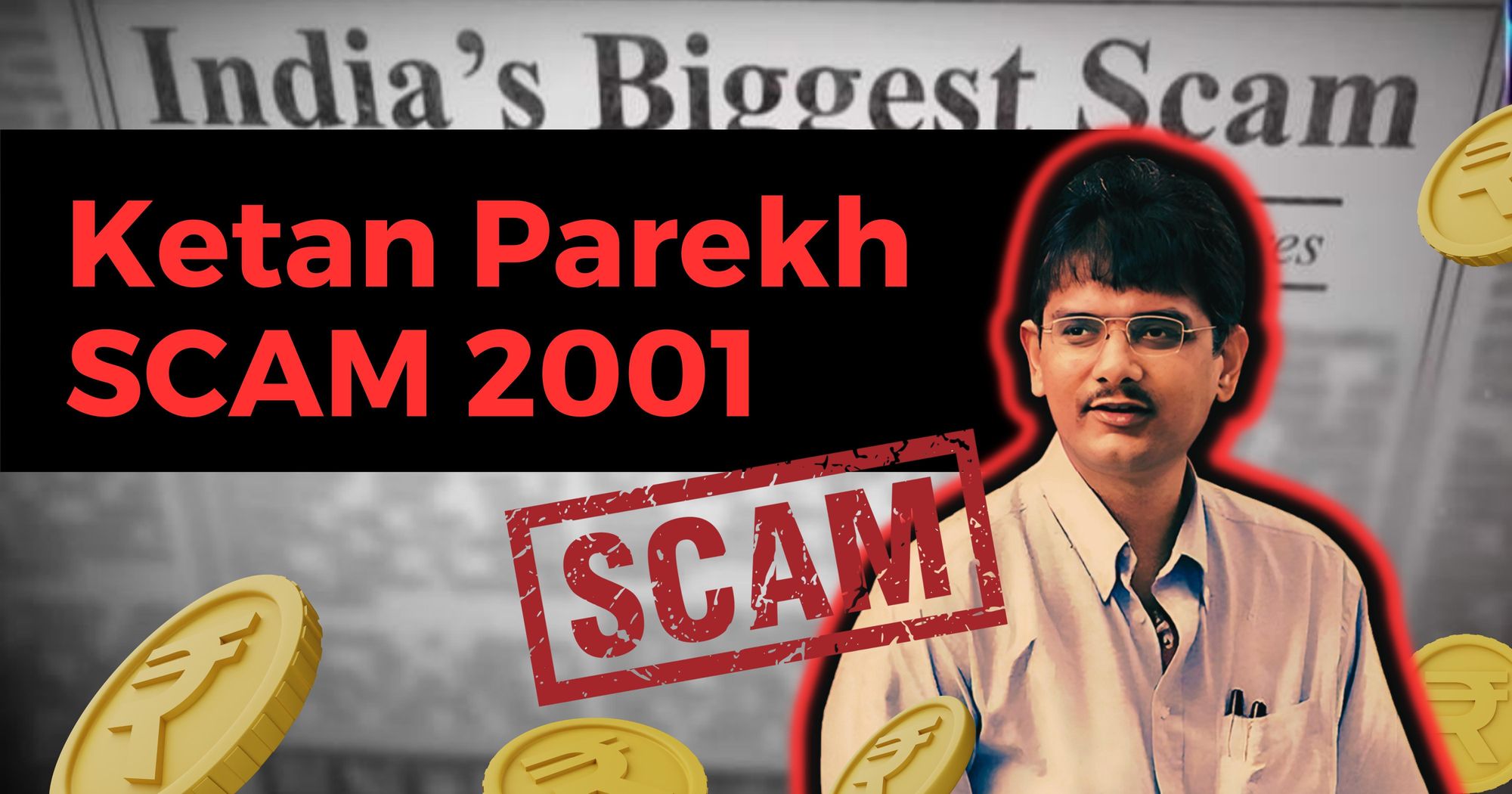The Ketan Parekh Scam of 2001

Introduction
The Indian stock market has seen some of the biggest financial scams in history. The extent of the fraud was estimated to be up to Rs 40,000 crore, making it one of the biggest financial scams in India.
The Ketan Parekh Scam of 2001 is considered to be one of the biggest stock market scams in Indian history. Ketan Parekh, a Mumbai-based stockbroker, was involved in a fraudulent scheme that led to the collapse of several Indian banks and financial institutions.
Parekh was known for his aggressive trading strategies, which involved borrowing large sums of money from banks and investing them in the stock market. He had a close network of associates who helped him manipulate stock prices to his advantage.
Who is Ketan Parekh
Ketan Parekh was a Chartered Accountant (CA) by profession. He began his career in the late 1980s and initially ran a business called NH Securities— a stockbroking firm established by his father. Later, Parekh joined Harshad Mehta’s firm (Grow More Research & Asset Management), where he closely observed market trends and the mindset of investors.
Ketan Parekh was a former Indian stockbroker who was involved in a major financial scam in 2001. Parekh was born in Mumbai, India, in 1966 and grew up in a middle-class family. He began his career as a chartered accountant but later moved into the stockbroking business.
Parekh was known for his aggressive trading strategies, which involved borrowing large sums of money from banks and investing them in the stock market. He had a close network of associates who helped him manipulate stock prices to his advantage. Using his network, Parekh would buy large quantities of stocks of certain companies, thereby driving up their prices. Once the prices reached a certain level, he would sell the stocks and make a profit.
The Scam
Ketan Parekh looked into the "Pump and Dump” system used by Harshad Mehta in-depth. Market participants had the perception that whichever stock the Big Bull chose would turn into gold. Eventually, more people would invest in these stocks, further driving up prices. When the prices reached their peak, Mehta and his associates would book MASSIVE profits!
Parekh wanted to use the same system to his advantage, but with a few tweaks. He strongly believed in the potential growth of companies within the Information, Communication, and Entertainment (ICE) sector. The dot-com boom had just started between 1999 and 2000, and many of his stock predictions were pretty accurate. He was able to pump up the share prices of several firms. However, Ketan Parekh wanted to take it a step further, and encouraged institutional investors to invest in stocks he had manipulated. He felt that it would be easier to control major institutional investors rather than retail investors who had varying interests and views.
How Did He Convince Institutional Investors?
- Upon further research, Ketan Parekh found out that institutional investors would only invest in those stocks that had high trading volumes and media attention. To fulfill the first criteria, he resorted to an illegal circular trading scheme:
- For example, Broker A would place a buy order for a stock at a certain price and certain quantity. At the same time, Broker B places an order to sell the same quantity, at the same price, and matches the trade. Likewise, more brokers would join and conduct similar transactions, thereby showing high trading volumes.
- K10 stocks like PentaMedia Graphics' price surged from Rs 175 to Rs 2,700 and that of Global Telesystems rose from Rs 185 to Rs 3,100!
Moreover, he conducted most of the investments/trades in the Calcutta Stock Exchange (CSE) as it did not have any strict regulations at the time. He artificially created a 200% annual return on some stocks!
The Downfall
Just like his predecessor and mentor, Ketan Parekh became too greedy. He wanted to obtain more funds to pump up stock prices on a larger scale. Thus, he approached the promoters of those companies whose stocks he had been manipulating and raised funds from them! Promoters (who hold large quantities of a company’s shares) believed they would surely benefit from the surge in share prices. Their net worth would increase, and they could also pledge shares to get loans from banks. However, these were clear cases of insider trading.
Secondly, Parekh illegally raised large sums of money from Global Trust Bank (GTB) and Madhavpura Mercantile Cooperative Bank (MMCB). Interestingly, he was on the board of both banks! He reportedly bribed bank officials and persuaded them to provide loans against shares.
According to the Reserve Bank of India (RBI) guidelines, banks were not allowed to give out more than Rs 15 crore as loans to a stockbroker. But MMCB and GTB sanctioned loans of around Rs 800 crore and Rs 100 crore, respectively, to Ketan Parekh. He also made MMCB issue a pay order worth Rs 137 crore to one of his own companies. (A pay order is a financial instrument issued by a bank on behalf of a customer that instructs another bank to pay a specific amount to a third party.) However, Parekh had never deposited this amount at MMCB. He used the pay order to obtain funds from Bank of India and manipulate share prices.
Exposed!
The news of Ketan Parekh’s scam first came into the limelight when Bank of India (Mumbai Branch) alleged that he had defrauded them to the tune of Rs.137 crore. Sucheta Dalal of the Times of India uncovered the entire scam and published a report on it. This ultimately caused mayhem and resulted in a stock market crash in 2001. The RBI initiated an investigation against Parekh.
- Ketan Parekh was found guilty of insider trading and arrested by the CBI. He was also convicted of rigging share prices and was banned from trading until 2017.
- In 2009, market regulator SEBI discovered that he was using front companies to carry out illegal activities. Thus, nearly 26 entities were banned from trading as a result of that investigation.
Later in March 2014, Parekh was convicted by a special CBI court for cheating and sentenced to two years of rigorous imprisonment. The most recent development came in 2021 when the Supreme Court allowed Ketan Parekh to travel to the United Kingdom to attend to his daughter's medical needs.
Conclusion
In conclusion, Ketan Parekh's scam of 2001 was a massive fraud that shook the Indian stock market. Parekh's greed and ambition led him to become one of the biggest scamsters in Indian history. He manipulated stock prices by using the "pump and dump" system, circular trading, and raising funds from promoters and banks. However, his downfall came when he became too greedy and was exposed by the Times of India. He was found guilty of insider trading and rigging share prices, leading to his arrest and conviction. The Ketan Parekh scam is a reminder that greed can lead to a person's downfall, even if they are successful for some time.
